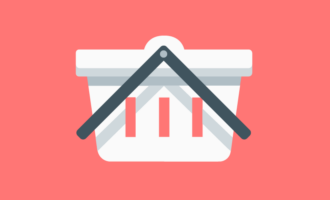If lead nurturing is contacting a lead with information over and over again, then lead enrichment is the background that gives you detail and insight into that lead, which lets you engage with them with more accuracy and effectiveness. It is the process of making sure your data is complete, accurate, up-to-date, and unique.
Lead enrichment helps you to structure and gather data that supports your leads. It also is adding actionable intelligence to your leads. This will help to increase the number of leads you get, as well as the quality and accuracy of the information you collect. The more up-to-date and accurate your information is, the more likely you are to have a successful sale.
Lead enrichment is essential because it makes the sales process more manageable. The information gathered from lead enrichment can help to flesh out what influences the lead and what influences or determines their buying decisions. When your leads are enriched, you can make smarter choices on how to engage with that lead, and better engagement will lead to more conversions from prospects to leads and into customers.
In an article by TechnologyAdvice, LeadGenius estimated that 1 to 6.5 percent of your overall lead data loses its accuracy every month due to high turnover rates. This is due to outdated, duplicated or even incorrect information in databases — even if the information is brand new. A 40 percent jump in revenue can happen when the quality of leads are kept high, according to Marketo. As many as 84 percent of marketing databases are not or are barely functioning — and 88 percent of those records are missing basic data like revenue, employees and industry fields.
What goes into lead enrichment?
Lead enrichment helps you to structure and gather data that supports your leads. It also is adding actionable intelligence to your leads. This will help to increase the number of leads you get, as well as the quality and accuracy of the information you collect. The more up-to-date and accurate your information is, the more likely you are to have a successful sale.
Lead enrichment is essential because it makes the sales process more manageable. The information gathered from lead enrichment can help to flesh out what influences the lead and what influences or determines their buying decisions. When your leads are enriched, you can make smarter choices on how to engage with that lead, and better engagement will lead to more conversions from prospects to leads and into customers.
In an article by TechnologyAdvice, LeadGenius estimated that 1 to 6.5 percent of your overall lead data loses its accuracy every month due to high turnover rates. This is due to outdated, duplicated or even incorrect information in databases — even if the information is brand new. A 40 percent jump in revenue can happen when the quality of leads are kept high, according to Marketo. As many as 84 percent of marketing databases are not or are barely functioning — and 88 percent of those records are missing basic data like revenue, employees and industry fields.
What goes into lead enrichment?

Lead enrichment helps to make the sales process more successful. To have a successful sales process, your sales team needs to be developing solid relationships. Lead enrichment strategies are designed to gather the relevant data that qualifies the lead and establishes what actions need to be taken to get to the decision-maker, whether the lead is the person with purchasing power or not.
Some lead enrichment processes, automated or manual, are very granular. These processes find out more substantial demographic qualities (like general demographic, gender, age group) while others deliver more specific information (like personalized interests, likes, dislikes and specific areas lived in.)
Where does lead enrichment data come from?

The data pieces that make up lead enrichment can come from many different places. Three important factors are the accessibility of the information, reliability or quality of the data, and transferability to your task at hand.
Some lead enrichment data comes from automated processes (more on that below). These softwares automatically pair either internal or external data with a database of information you already have.
Another way of collecting lead enrichment data is manual — for example, a salesperson or lead qualifier could use LinkedIn to find relevant data on their client or lead. That person could also check a business’ directory, if it is posted online, and you can even use social media such as Twitter and Facebook to gather relevant information.
Many businesses use a combination of both — an automated software that is assisting in generating the lead (see Chapter 4) and a semi-manual approach where the users themselves are entering their information into a custom form.
Breakdown of lead enrichment

Benefits
The number one, overall benefit of lead enrichment is simple: to get more leads to the finish line, which will increase the efficiency of your sales process. Lead enrichment helps close more sales by building a more effective sales team — one that is hyperfocused on the customer. The salesperson now can “know” the prospect before reaching out to them, which can aid in crafting a unique and appealing pitch.
Other benefits include:
- Reduction of client effort at entry (or re-engagement stages).
- Automates the process of keeping leads relevant and information up to date.
- Links multiple data points together in one place.
- Aids in increasing sales conversions — when the system remembers the user, it builds trust and doesn’t feel like spam.
- Better retention — users like not having to re-enter their information over and over, which means they are more likely to stick with your site and information.
- When the average salesperson spends only 24 percent of their time actually selling each week, then automation can increase the efficiency of the salesperson from the beginning.
- Increase in conversion rates (like how Zuora saw a 68 percent increase in the lead to an opportunity to conversion rate).
Automatic software
Software performs something called data mining, or big data, automatically. This process usually involves some kind of system in which the software combs through what information you do have and links it to an external source.
Benefits include:
- Integration of multisource and multidepartment data sources.
- Integration of internal and external data sources.
- A central system in which new information can be added, no matter which department or staff is doing so.
- Automated task assignments or automation of critical points in the sales cycles.
What can a lead enrichment software do automatically?
- Give or assign a lead score.
- Store information about the company.
- Link to a trusted external source (e.g., LinkedIn) to qualify your leads, and give background information.
- What pages the lead is going to and how often they come back to your site.
- What content the lead is clicking or engaging with the most.
Information software provides
If you have the right kind of lead enrichment software, then it will provide some standard information, such as:
- First and last name.
- If applicable: company associated with, title, position.
- Social media profiles.
- Professional accounts, such as LinkedIn or other types of profiles.
- General location (e.g., Houston, Texas, or Los Angeles, California, et cetera)
- Gravatar or another type of photo
- Relevant contact information (email, phone, screen name, etc.)
Moreover, there are types of software that can provide more specific data points, such as property records, specialized demographics and affinities. Many software companies search the web for sites that the user is signed up for utilizing the same email address.
Manual lead generation
If you are a small sales team, or if you are going for a higher budget project type and need more granular information, the manual method to lead enrichment will be more beneficial to you. Digging into the background of a potential client or lead manually will ensure that any and all information has been verified accurately by a human. Places that are relevant to search include:
- LinkedIn.
- Social media sites that you must be connected with to view (such as private Facebook or Twitter accounts).
- Publicly accessible databases.
How does automation help marketing?

When you automate your lead enrichment process, it can help marketers segment their lists and funnels to allow for greater segmentation and personalization. The more targeted your information to the lead, the more likely they are to engage with you. For example, in the context of email, MailChimp has shown that segmented, personalized lists outperform generalized email lists in the following categories:
- Email opens: 14.31 percent higher open rate.
- Unique opens: 10.64 percent higher open rate.
- Clicks: 100.95 percent more clicks.
- Bounces: 4.65 percent fewer bounces (incorrect email entered/sent to).
- Reports: 3.90 percent fewer abuse reports.
- Unsubscribes: 9.37 percent less unsubscribe requests.
While there are a couple of tools you can use individually, one of the best solutions is to automate the entire process by linking your software together. This takes care of all the back-end updating and ensures that all information is correct, at all times.
Additionally, by automating your process, you can run tests on custom forms and landing pages to see which performs better. While some companies have seen a 120 percent conversion increase when reducing the fields on their forms, many still need that additional information (but aren’t sure how to get it without asking at sign-up.) Automation of lead enrichment is how you can collect those extra data points but still maintain high conversion rates and sign-up rates.
Another feature of automation is lookalike prospects — or prospects that are targeted by your software because they display a lot of the same traits as your current leads. These are people with similar titles, interests, clicking behaviors and profiles — or in other words, exactly the people you’d like to target.
Brands of common lead enrichment software
- LeadBoxer
- Pipl
- BeenVerified (which also does background checks!)
- Clearbit
- FullContact
There are many, many more types of lead enrichment softwares out there. How do you pick the right one for you? First off, determine the amount of information you need. Ask yourself these three questions:
- Do I need to know more than just the person’s initial contact information and job title?
- How much is a lead worth to me? (See Chapter 6 for more information on collecting data.)
- How much am I willing to spend on an automated process for lead enrichment?
From there, look at the pricing and tools that each software has. Does your lead generation software already have lead enrichment capabilities you can upgrade to? Then continue to use that software! If not, find one that matches and can easily integrate into your current SEO, analytics, and email marketing software.






































































Send Comment: